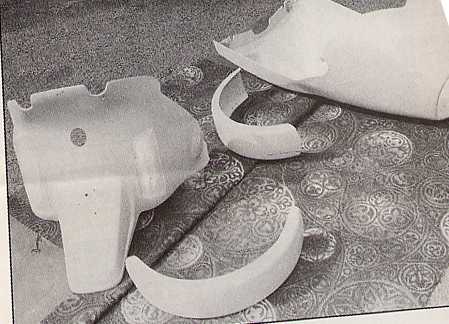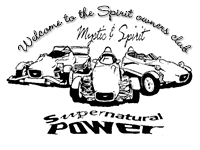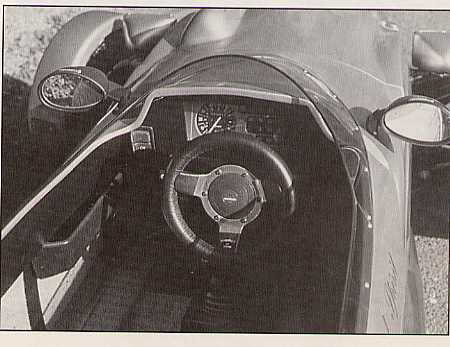| . The project all started with
a Renault 5 1300cc saloon which had failed its MOT. A snip for fifty quid.
Mucky dismantling followed by replacement and refurbishment was the usual
test of fortitude. But that's always the case with a kit car. In contrast,
the assembly work on Hudson's accurately engineered chassis proceeded
at pace. By the end of our second report, an emergent car with its two
seats, three wheels and four cylinders was close to completion. However,
past experience of building kit cars has taught the lesson that the last
lap is often the longest. It's the finishing work which takes time. What's
more, there's a strong disincentive not to bother with the embellishment.
A Hudson Kindred Spirit is such fun to drive that once it's on the road,
you don't want to deal with details. Only strong discipline determined
that this particular model would be finished right down to the clock on
the dashboard. However, we'll deal with details later and get back to
basics. Like the brakes. Brake System Starting at the master cylinder,
the V-registered Renault 5 had been fitted with a unit whose plastic reservoir
was mounted remotely. This necessitates removal of two flexible connecting
pipes before pushing the plastic reservoir directly onto the cylinder
itself. You also dispense with the servo; it takes up valuable space and
isn't needed on a light car like the Spirit. However, you'll need to retain
the brakes compensator which will originally been fixed near the Renault
back axle. When the back of a Renault 5 is heavily laden, perhaps with
passengers, a small lever attached to the depressed rear axle alters the
setting on the compensator. This automatically adjusts the distribution
of the brakes fluid to the front and rear wheels respectively to suit
the load. On the Kindred Spirit, the axle connecting lever is cut away
and discarded; but not the cast unit itself and its adjustment screw.
The facility to alter the proportion of braking to the front or rear of
the car is thus retained. Acting on Hudson instructions, we mounted the
compensator on the rear of the chassis on the opposite side from the petrol
tank. |
 |
 Part
3/1
Part
3/1

